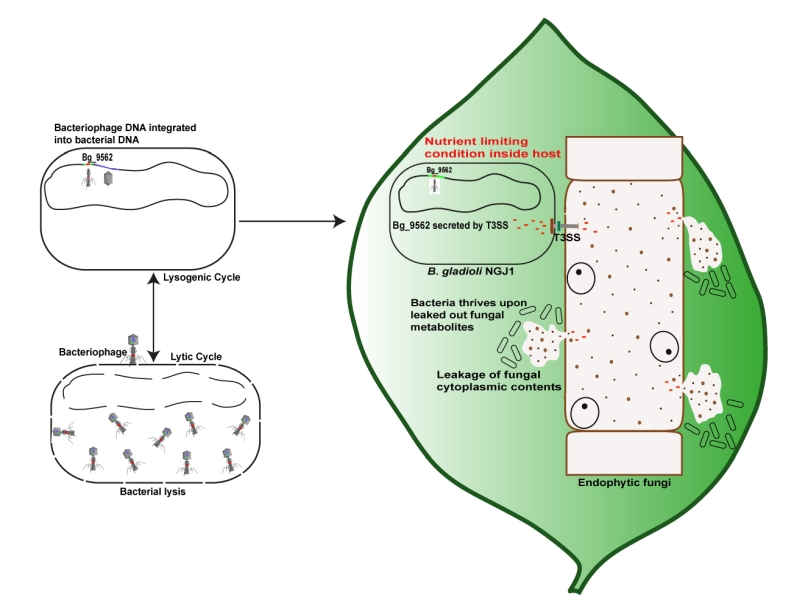Back to article: Burkholderia gladioli strain NGJ1 deploys a prophage tail-like protein for mycophagy
FIGURE 1: The mycophagous ability of NGJ1 would be advantageous for the bacterium to survive in a hostile environment. Bacterial genome contains bacteriophage clusters, which upon induction form phage particles and kill bacteria. However the B. gladioli strain NGJ1 had evolved to delete the head assembly proteins from the prophage cluster so that the phage particle cannot be induced. In this process, the bacterium seems to have evolved a T3SS signal in a prophage tail-like protein (Bg_9562) and delivers the protein into fungal cells in a functional T3SS dependent manner. By unknown mechanism, this induces fungal cell death responses and leads to disintegration of fungal hypha. This causes release of fungal cytoplasmic grannules as well as metabolites which the bacterium can utilize to sustain its growth. The mycophagous property of the bacterium can help it to survive under nutrient limiting condition. Considering this, we speculate the NGJ1 to be a hub bacterium which can reshape the entire plant associated microbiome and however this needs to be experimentally explored.

